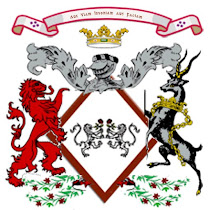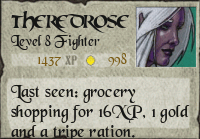Thig an nathair as an toll
Là donn Brìde,
Ged robh trì troighean dhen t-sneachd
Air leac an làir.
Là donn Brìde,
Ged robh trì troighean dhen t-sneachd
Air leac an làir.
Wishing you and yours a blessed St. Brigid's Day.
As the patron saint of healing, poetry, and smithcraft among many other things, Brigid watches over me - and has always been special to me.
Brigid's feast day was placed by the early church on the calendar at the pagan festival of Imbolc, the ancient celebration of the coming of Spring. Brigid holds the distinct honor of being both a Pagan Goddess and a recognized Christian Saint. Her story is even more amazing in that no one actually knows if she even existed in the “real” world. Belief in her was so widespread that early Christianity had no choice but to honor her, as the Pagans simply refused to stop worshipping her.
The festival that honors Brigid is called Imbolc, which is celebrated on February 1st. This is a solar festival which honors the sun, and of course light. It is also a festival of purification by fire. The word Imbolc translates to “in milk.” When our ancient ancestors peeked out of their caves and saw pregnant animals wandering by, they knew that Spring was just around the corner.
Worship of Brigid eventually reached Scotland and the British Isles, so she is a true Celtic Goddess indeed. However, Brigid was eventually made a Saint by the Christian church. This aspect of Brigid founded a religious community at Kildare in Ireland. A fire in her honor was kept burning day and night until fairly recent times. Nineteen maidens were in attendance at all times to make sure the fire never went out. This reverence for fire was most likely residual from her Goddess aspect. As a Saint Brigid was seen as the midwife for the Virgin Mary, and she is also the patroness Saint of Ireland.
The eve of St Brigid’s day is still celebrated by some in Ireland and in some parts of Britain. Images of her are made out of straw and used as protectors of the household. Offerings of food and gifts are placed outside for her, as she is said to walk among the hillsides on that night. St. Brigid’s crosses are also made in the shape of a sun wheel to honor both the Goddess and the newly arrived Sun.
The celebration of Imbolc in Scotland is a bit different with Brigid replacing the blue-faced hag of the Highlands, who is the winter version of the Goddess. Her name is Cailleach Bheur. This festival of Brigid was at one time only open to the women of the Highlands.
Tonight on Isle of Skye I will be lighting the fires - the sacred flames of healing and purification. I have not yet decided whether this will be a private marking of the day or something more public and festive. Just might get something fun together and send my messenger around to all of you to join in the celebration.
For more information on St. Brigid please feel free to travel to the Sanits SQPN site.




0 comments:
Post a Comment